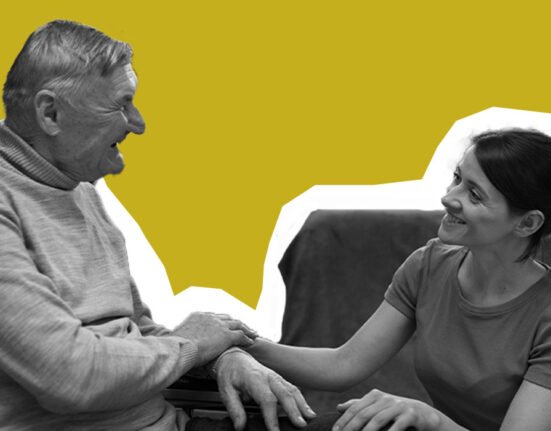The neurodevelopmental disorder known as Attention Deficit Hyperactivity Disorder (ADHD) is typified by patterns of impulsivity, hyperactivity, and inattention that are out of step with the person’s developmental stage. Women are commonly underdiagnosed with ADHD, even though the disorder is widely recognized and diagnosed in children, particularly in boys. Numerous variables, such as cultural expectations, the disorder’s various presentations in women, and a general lack of understanding, contribute to this underdiagnosis. This article sheds light on this often-overlooked issue by examining the symptoms of ADHD in women.
Related: The Hidden Struggles of Adult ADHD
Historical Context and Gender Bias
ADHD was once thought to be a disorder that affected hyperactive young boys. Gender bias in the diagnosis and treatment of the condition has significantly increased as a result of this stereotype. Women with ADHD frequently go undiagnosed because they may not display the typical symptoms of hyperactivity and impulsivity, especially if their primary focus is on attention problems. Rather, they could appear hazy, disjointed, or dreamy, which could be wrongly linked to personality features or other illnesses.
Read More: Some mental health issues most commonly faced by women
Symptoms of ADHD in Women
The three main symptoms of ADHD in women are impulsivity, hyperactivity, and inattention, just like in men. But there are variations in how these symptoms present themselves:
Inattention
- Difficulty Focusing: Women with ADHD frequently struggle to stay focused on tasks, particularly when they are repetitive or routine. They could be readily sidetracked by their ideas or by outside stimuli.
- Disorganization and Forgetfulness: Women with ADHD frequently misplace things, find it difficult to maintain an orderly living or work area, and forget appointments or commitments.
- Task Avoidance: Procrastination or avoidance are common responses to tasks that seem too difficult to complete.
- Overwhelm with Multitasking: Despite their best efforts, women with ADHD frequently find it overwhelming to juggle multiple tasks at once and may find it difficult to finish any of them successfully.
Hyperactivity and Impulsivity
- Internal Restlessness: In contrast to the obvious hyperactivity that is frequently observed in boys, women with ADHD may feel restless inside. They could find it difficult to unwind or feel the need to stay active all the time.
- Impulsive Decisions and Actions: This can involve anything from careless eating and spending to rash choices regarding jobs and relationships.
- Emotional Dysregulation: Mood swings and strong emotions are common among women with ADHD. They could react to circumstances with an emotional intensity that seems out of proportion to what happened.
Secondary Symptoms
Although they are not specific signs of ADHD, women with the disorder frequently exhibit these symptoms:
- Low Self-Esteem: Low self-esteem and inadequacy can result from ongoing difficulties with memory, organization, and social interactions.
- Anxiety and Depression: These may result from persistent difficulties and setbacks and serve as indications or outcomes of undiagnosed ADHD.
- Sleep Disturbances: It’s normal to have trouble falling and staying asleep, which is frequently brought on by an overactive mind or a hard time relaxing.
Diagnosis Challenges
There are many difficulties in diagnosing ADHD in females. Many women grow up undiagnosed, frequently gaining recognition only after their child receives one. Women with ADHD should have their life history and the nuances of their symptoms taken into account during the evaluation process.
- Overlapping Conditions: The diagnosis of ADHD in women is frequently complicated by the coexistence of other illnesses like eating disorders, anxiety, and depression.
- Societal Expectations: Women are often expected to be organized and emotionally regulated. When they fail to meet these expectations due to ADHD, it may be misconstrued as a personal failure rather than a neurodevelopmental disorder.
Treatment and Management
Improving women’s quality of life and assisting them in effectively managing their symptoms are contingent upon the treatment and management of ADHD. Medication can greatly lessen the symptoms of impulsivity, hyperactivity, and inattention. Examples of medications include atomoxetine, a non-stimulant, and stimulants like methylphenidate. Medication, however, must be customised for each patient’s needs and closely watched for adverse effects and efficacy.
Treatment involves psychotherapy, especially cognitive behavioural therapy (CBT). CBT assists women with ADHD in addressing any secondary concerns like sadness, anxiety, or low self-esteem as well as helping them create coping mechanisms and enhance their organizing abilities. It’s an organized method that assists in recognizing harmful thought patterns and actions so that more positive ones can take their place.
Modifying one’s lifestyle is just as crucial to managing ADHD. For example, regular exercise can enhance mood, energy, and concentration. Stability and general well-being can also be enhanced by a balanced diet and regular mealtimes. Getting enough sleep is essential since insufficient sleep can make symptoms of ADHD worse. Establishing a soothing evening routine and sticking to a regular sleep schedule can be helpful.
Related: Are you being rude or is it ADHD?
Moreover, time management strategies and organizing supplies like alarm clocks, applications, and planners can assist women with ADHD in maintaining daily task completion schedules and lowering feelings of overwhelm. Other useful tactics include creating routines and segmenting work into smaller, more manageable pieces.
Extra help and encouragement can be obtained through support groups and coaching specifically designed for women with ADHD. These sites can provide a feeling of belonging and empathy in addition to helpful tips and techniques for handling ADHD-related problems and symptoms.
Related: ADHD and Need for Rehabilitation
In general, treating ADHD in women effectively requires a multifaceted strategy that involves medication, psychotherapy, and lifestyle modifications based on each person’s unique needs. To create a treatment plan that considers every part of the patient’s life impacted by ADHD, cooperation between therapists, healthcare professionals, and the individual is essential.
Take Away
Women with ADHD have a complicated and frequently misdiagnosed disorder. The first step toward a diagnosis and course of therapy that can enhance quality of life is identifying the symptoms of ADHD in women. Healthcare providers must be aware of the gender-specific symptoms of ADHD, and society as a whole must get past prejudices that prevent women from being recognized as having this illness. To address the difficulties faced by women with ADHD and make sure they receive the help they require, awareness, education, and empathy are essential. By raising awareness of this problem, we can close the gap between diagnosis and care, enabling women with ADHD to enjoy more happy and successful lives.
References +
- McCulty, J. (2024, February 29). ADHD in Women: Signs, symptoms, and treatment. ADDA – Attention Deficit Disorder Association. https://add.org/adhd-in-women/
- Koseva, N. (2023, April 13). Understanding ADHD in Women: Symptoms, diagnosis, and treatment options. The ADHD Centre. https://www.adhdcentre.co.uk/understanding-adhd-in-women/
- Professional, C. C. M. (n.d.). ADHD in women. Cleveland Clinic. https://my.clevelandclinic.org/health/diseases/24741-adhd-in-women













Leave feedback about this